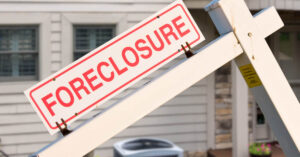Imagine a negative economic spiral that begins with office workers leaving their jobs in central business districts to become remote employees. As office buildings empty, companies close their offices or move their downtown locations to cost-friendly suburbs. Without workers filling the urban core, nearby retail businesses and restaurants close due to the lack of customers.
These factors result in declining municipal tax revenues, forcing the local government to offer fewer services. And the decline in amenities, coupled with cutbacks in city services, forces residents to abandon downtown neighborhoods.
“Workers and corporate leaders alike are beginning to realize that sprawling offices, especially in expensive city centers, are no longer as necessary.”
While such an urban nightmare may sound unlikely, three university business professors write that there is a risk of a version of this scenario occurring. The team of Arpit Gupta at New York University and Vrinda Mittal and Stijn Van Nieuwerburgh at Columbia University have coined this scenario as the “urban doom loop,” and they detailed it in their recent paper, “Work From Home and the Office Real Estate Apocalypse.”
The urban doom loop involves a series of interconnected events that can lead to economic declines in commercial real estate and beyond. As companies reevaluate leases or withdraw from them, vacancy rates increase and landlords face challenges in securing new tenants. This results in decreased property values and potential mortgage defaults. The ensuing economic downturn affects local tax revenues, stifles consumer spending and triggers layoffs, thus creating a cycle of economic hardship.
Far-reaching consequences
The landscapes of commercial real estate and commercial mortgages are undergoing significant transformations, driven in large part by the aftermath of the COVID-19 pandemic and the accelerated adoption of remote work. The emergence of the doom loop, characterized by the potential spiral of economic challenges in commercial real estate, has economists and business experts concerned about the implications for large and midsized cities along with the financial stability of lenders.
The pandemic has led to a seismic shift in how companies view office spaces. Workers and corporate leaders alike are beginning to realize that sprawling offices, especially in expensive city centers, are no longer as necessary.
Major corporations such as Salesforce are paring back their office footprints as remote work remains attractive, leading to concerns about declining occupancy rates. This trend, coupled with reduced demand for office space, has far-reaching consequences for the commercial real estate market.
According to consulting company Buildremote, 77% of the Fortune 100 companies operate on a hybrid work schedule, while 30% of these companies have announced reductions to their office-space footprints since 2020. Also, 13% of Fortune 100 firms do not require employees to have any scheduled office visits during a given week.
These large companies have traditionally been major driving forces of downtown office usage. With these firms reducing their office-space needs and having no plans to require workers to return to the office, the first major step in the urban doom loop may be starting for many cities.
Risk factors expand
While attention has been drawn to major cities such as New York and San Francisco, midsized cities are also at risk due to their limited capacity to absorb economic shocks. Unlike metro areas with diverse economic streams, midsized cities often heavily rely on one or two key industries. Consequently, the departure of a major tenant or a decline in property values can severely impact these cities’ revenues and employment prospects.
Not every city is equally at risk. Those with a high concentration of office space but relatively little residential space are more in danger. Those that are concentrated on one industry or have a small number of employers taking up a high percentage of downtown real estate also have an increased risk because other businesses or industries are less likely to absorb excess space. Also, cities that have poor transportation options (both public and private) will have a harder time avoiding this vicious cycle.
Some cities, including Provo, Utah; Boise, Idaho; and Austin have a more resilient core given that large portions of office space are utilized by a diversified combination of government agencies, higher education facilities, private corporations and nonprofit organizations. These are also locations where residents want to live, making them less likely to join the municipalities that suffer due to an exodus from the city center.
The urban doom loop has yet to fully materialize, but warning signs are evident. Midsized cities are experiencing higher office delinquency rates and lower occupancy rates compared to larger metros. The trend could intensify as loans are due for refinancing, a situation that is anticipated to unfold over the next 12 to 24 months. The looming deadlines for commercial mortgage maturities could most acutely impact regional banks, which hold a significant portion of commercial real estate debt.
Overcoming difficulties
For commercial mortgage brokers, the path forward is somewhat opaque as interest rates have reached a point where the bid-ask spread is often too wide for buyers and sellers to close deals. Furthermore, for many properties, refinancing may not be an option as injecting more equity may not be feasible. Instead, many of these properties will be foreclosed upon by their respective lenders.
There are three areas in which commercial mortgage lenders and their broker partners can seek to weather the storm and possibly emerge even stronger. The first is to perform thorough surveillance and loss-mitigation efforts on portfolios and individual assets. By conducting stress-test scenarios at the property and portfolio levels, brokers can focus on loan workouts with many types of clients and lender partners.
The second step is to take advantage of gap equity financing programs. These are private loans that cover the gap between another loan and the total cost of a project. Whether through affiliated subsidiaries or joint-venture partnerships, lenders that continue to make market-rate loans and offer gap equity financing — also known as a bridge loan — have the highest probability of successful closings.
The third point is flexibility. Lenders and their broker colleagues who display patience, creativity and common sense on loan restructuring efforts will build plenty of goodwill with their borrowers, even after the market improves.
Conversion problems
The Federal Reserve recognizes commercial real estate as a risk to economic stability. The central bank’s recent efforts to control inflation through higher interest rates impact demand for loans and investments. In turn, this affects the broader economy and contributes to the challenges faced by the commercial real estate sector.
The decline in demand for office space is expected to impact other sectors of the commercial real estate market, such as retail, industrial and multifamily properties. Property owners are attempting to repurpose vacant offices into alternative spaces such as apartments, kitchens or spas. But such solutions are often costly and haven’t gained widespread traction. The transformation of office space is influenced by various factors, including location and property type.
Converting offices to residential buildings is expensive for a variety of reasons. For example, living spaces require natural light. The shape of an office building frequently doesn’t allow light to penetrate to an inner residence. Plumbing and electrical requirements for office buildings and apartments are also much different.
Another part of the problem is companies fleeing downtown areas. Where will these urban residents work? The number of people who live in these buildings is significantly smaller than the number of people who work in an office building. Their commercial needs are different, meaning that turning offices into apartments might not offer the same consumer support to existing retail stores.
While some commercial properties, particularly those in prime locations, may weather the storm better than others, the market is expected to see discounted rents and sales prices, especially for older assets. The repurposing of office space may also play a crucial role in determining the value and viability of other commercial properties.
This is a problem that needs creative solutions. Some answers might be found in places where office buildings are shifting to new industries rather than remaining empty. For example, insurance company Humana occupies a large amount of downtown office space in Louisville, Kentucky. When the company recently downsized, it donated one of its buildings to the University of Louisville to support the school’s Health Equity Innovation Hub. Other corporations may learn from Humana’s actions and find creative ways to reuse unwanted space.
● ● ●
Commercial real estate is in a current state of flux that is shaped by the dynamics of remote work, economic uncertainties and changing consumer behaviors. The concept of the urban doom loop underscores the interconnectedness of factors that can trigger an economic spiral in this sector and beyond.
While the worst-case scenario of declining asset values, lost jobs and failed city centers is not guaranteed, the signs are compelling enough to warrant attention from economists, policymakers and industry stakeholders. As commercial real estate navigates these challenges, innovation, adaptation and strategic planning will be needed to weather the storm and seize opportunities for revitalization and growth. ●
Authors
-

Tim Wolski is a marketing leader with more than 25 years of experience. He currently serves as an adjunct professor at Bryant University, where he teaches new product development and entrepreneurial marketing. Wolski is passionate about making a meaningful impact. He stays ahead of marketing trends, ensuring his students and the companies that he works for deliver impactful, consumer-focused and data-driven marketing campaigns. Reach Wolski at (401) 965-2615.
View all posts -

James Gosse is a commercial real estate technology thought leader with more than 20 years of experience in negotiating commercial property sales. Gosse is a co-founder and senior adviser at OakEx, an online marketplace for commercial real estate. Gosse is driven by his passions for technology and commercial real estate, and he has been instrumental in the development of numerous online commercial real estate marketplace platforms and related businesses.
View all posts







